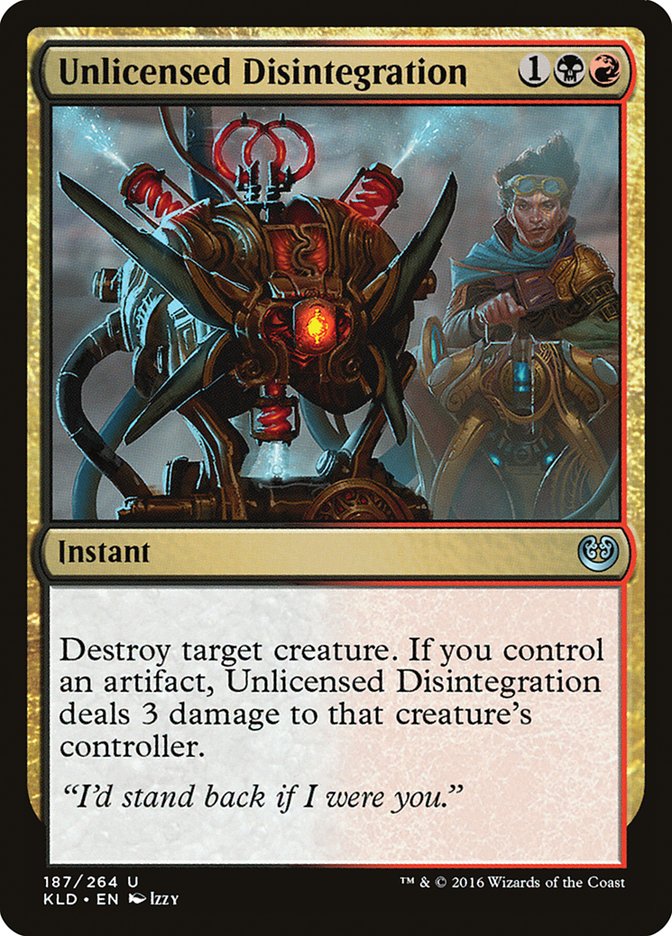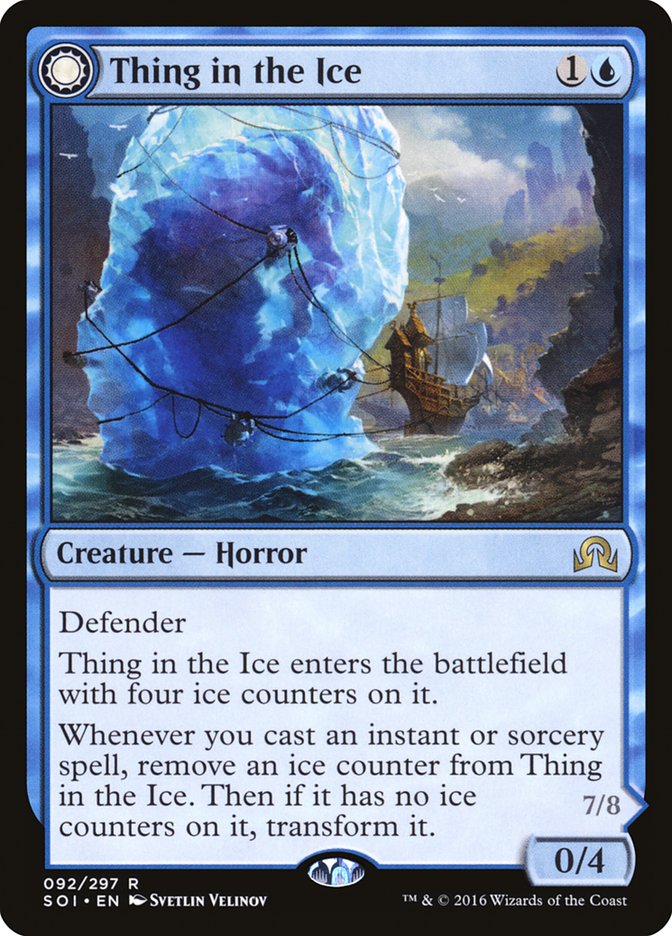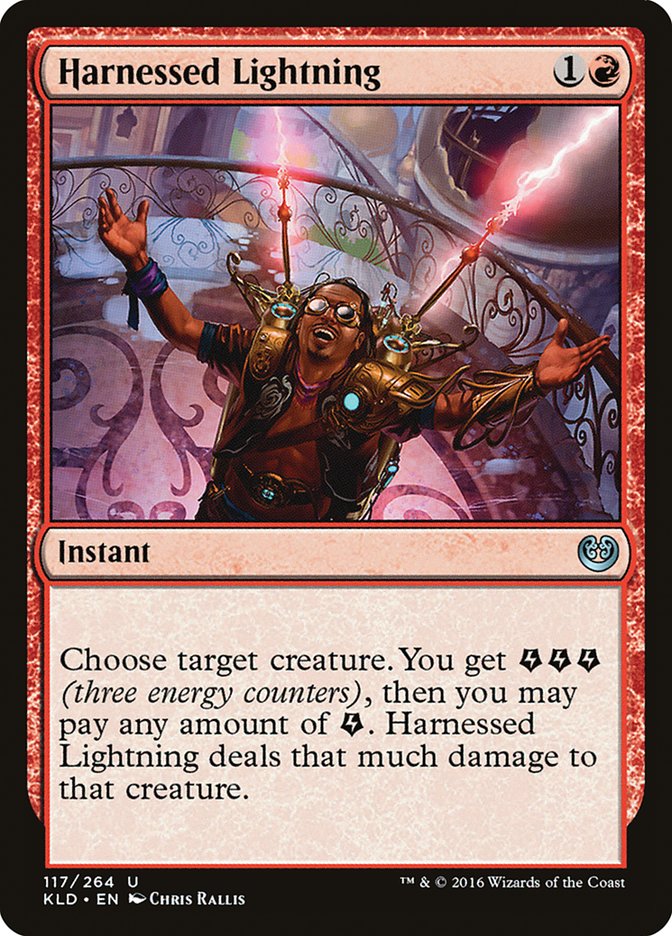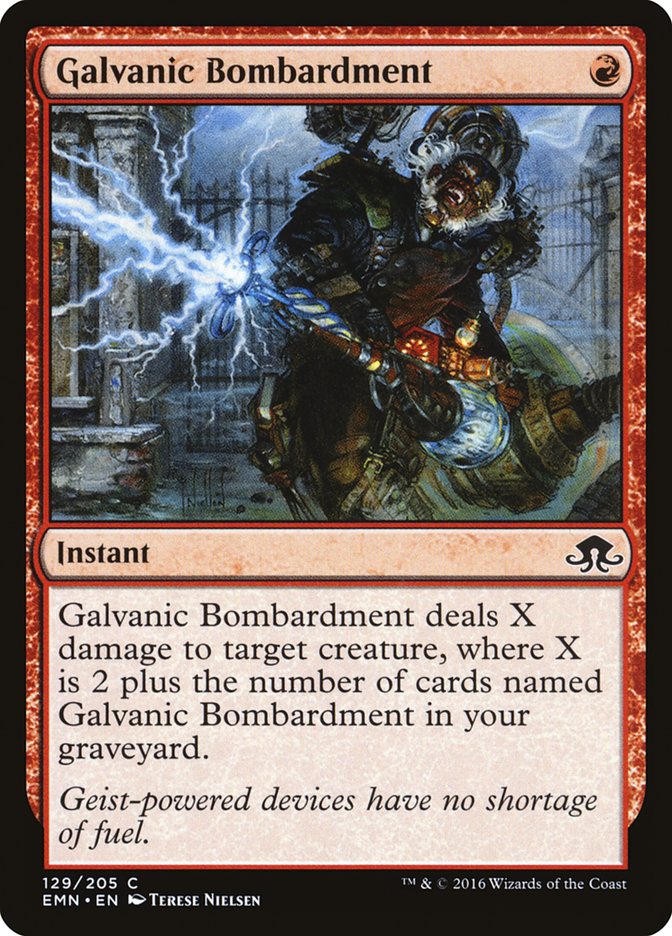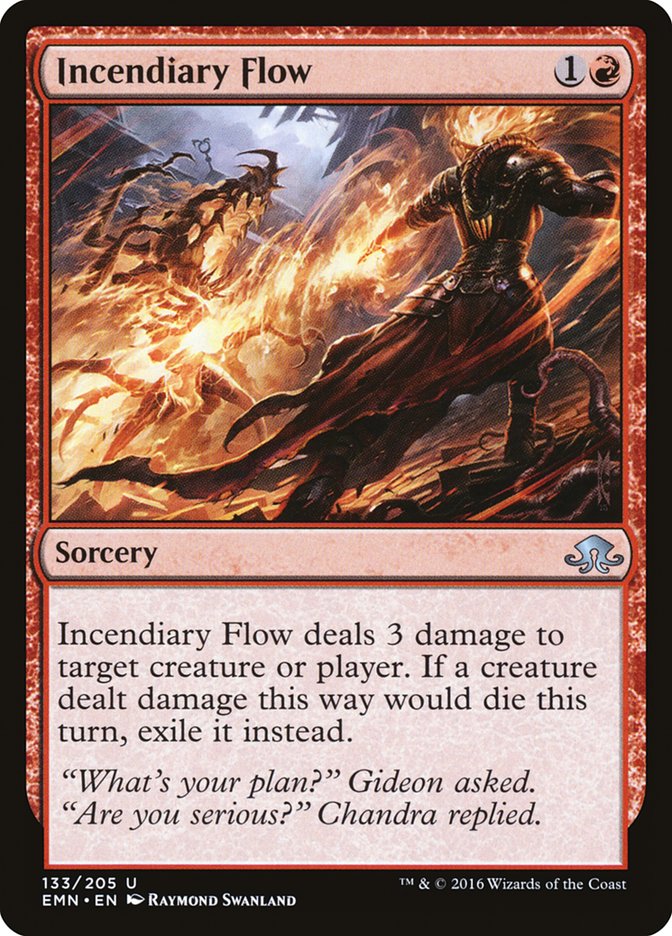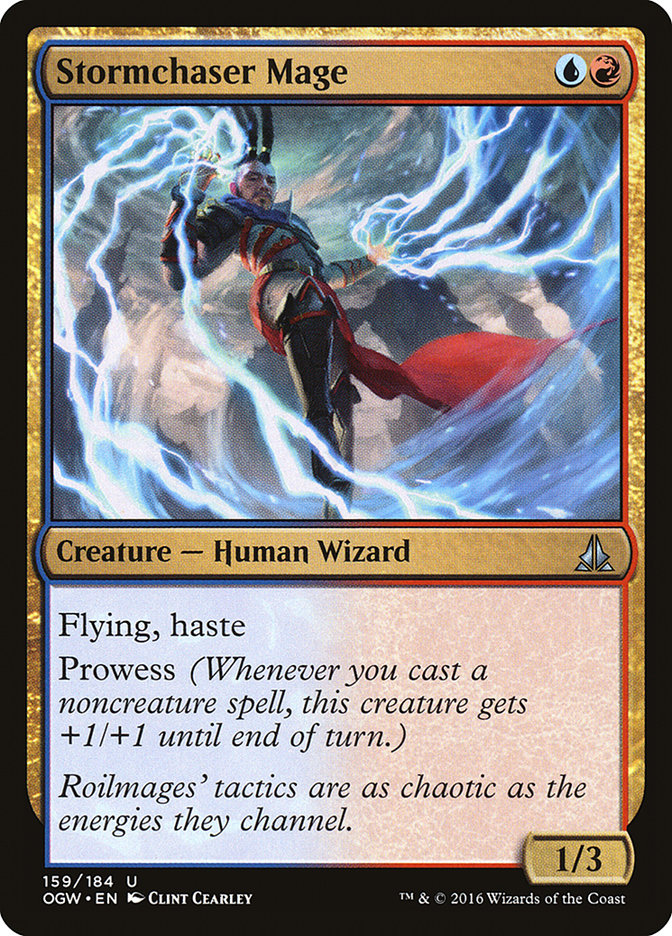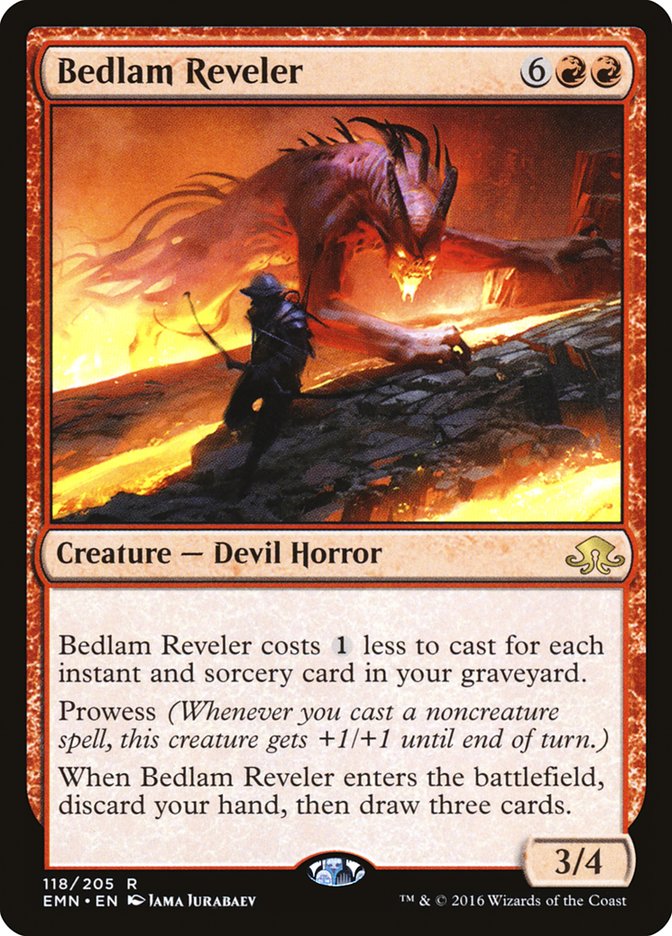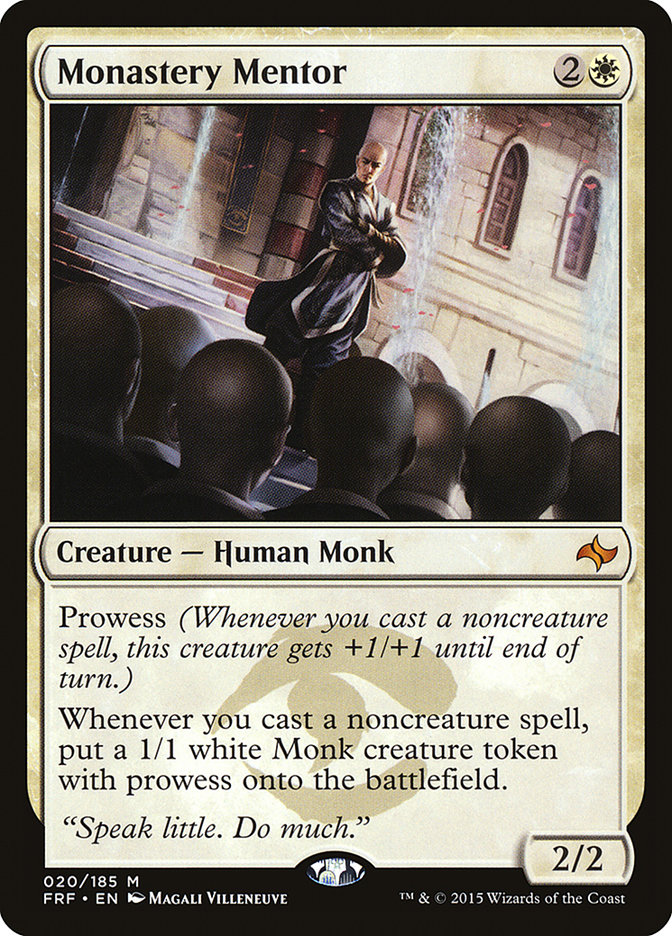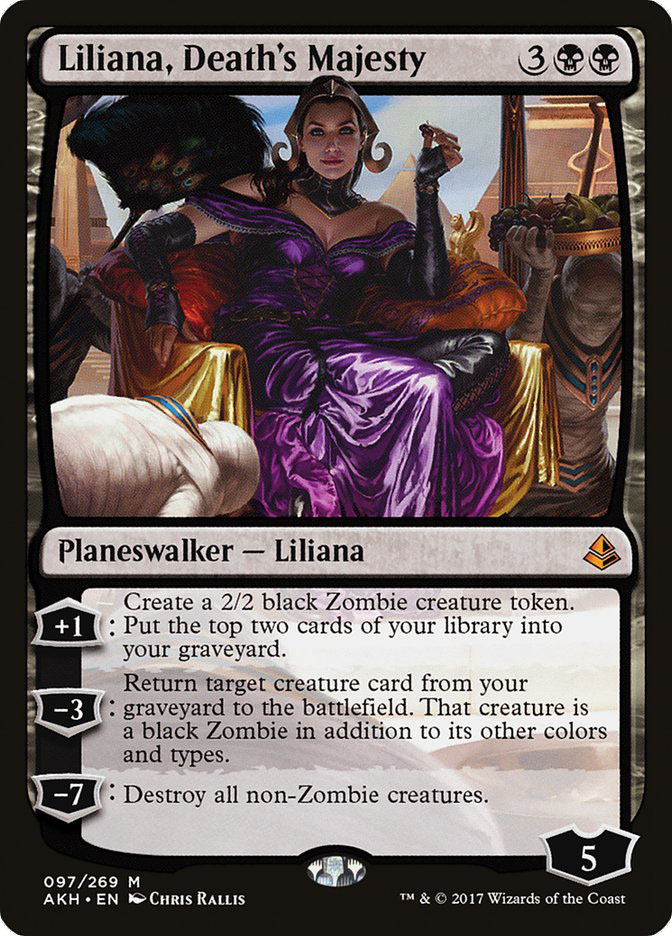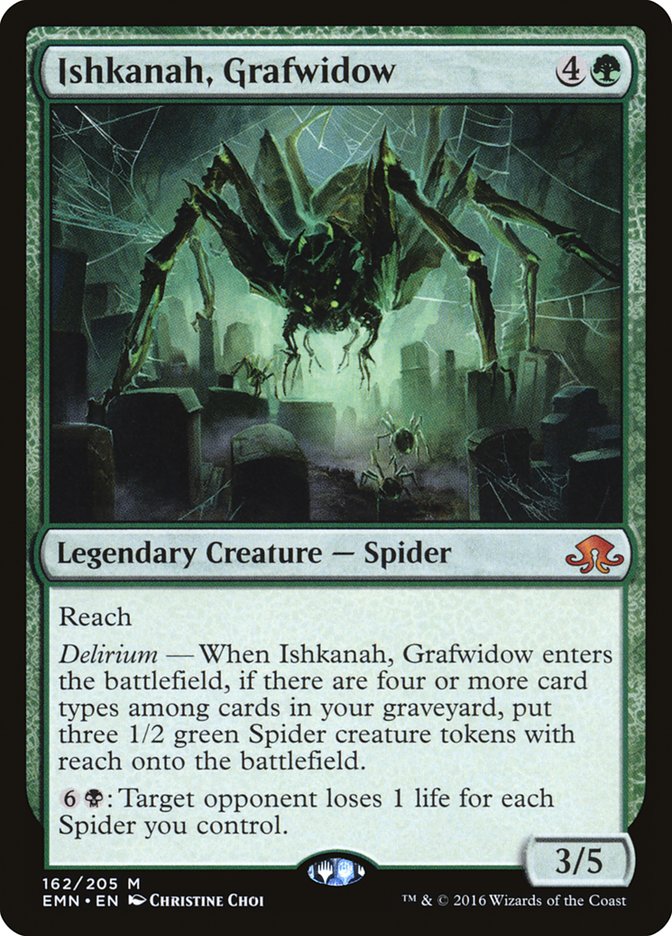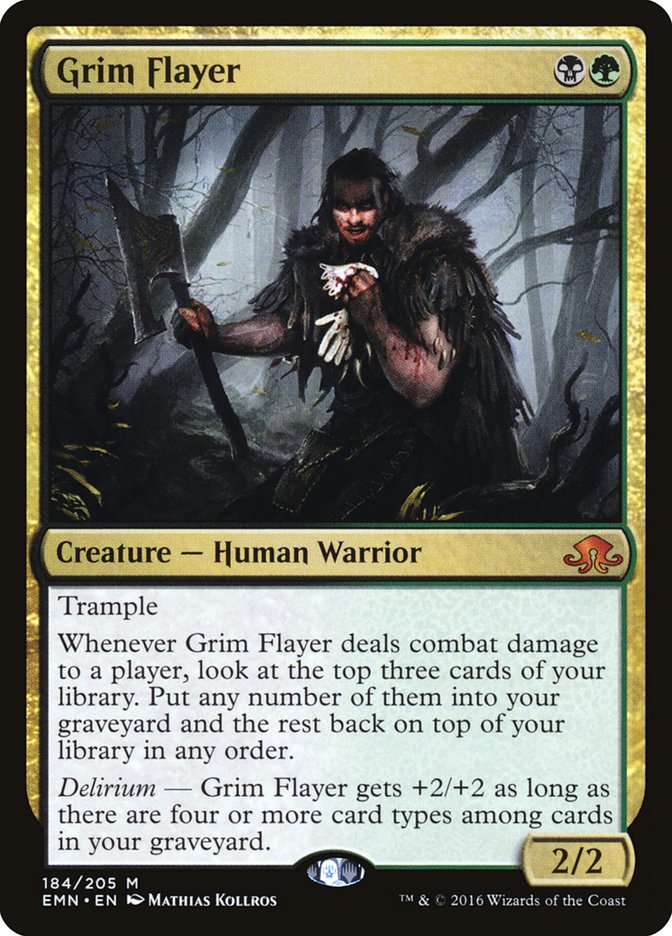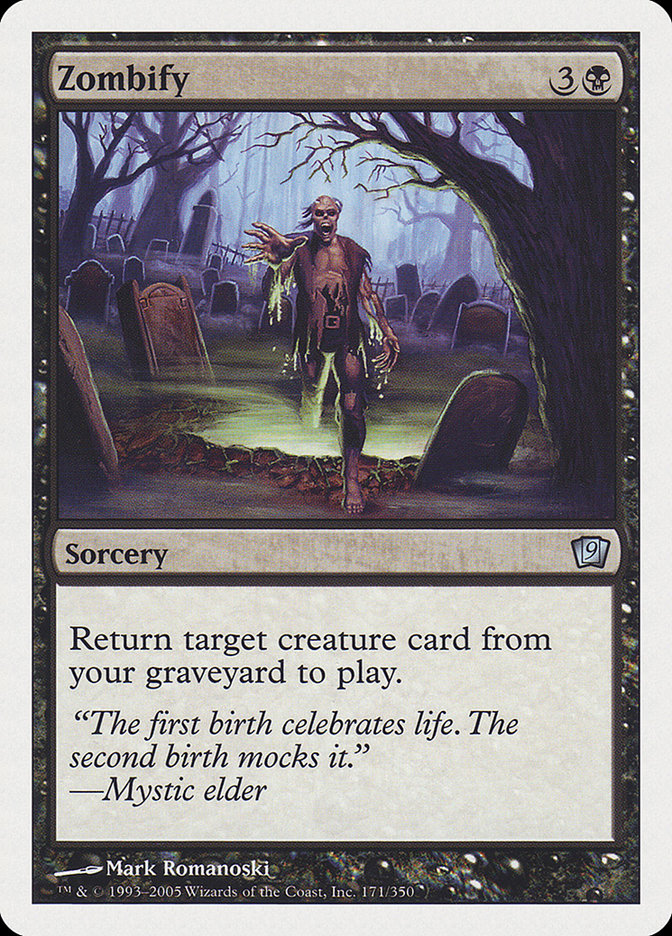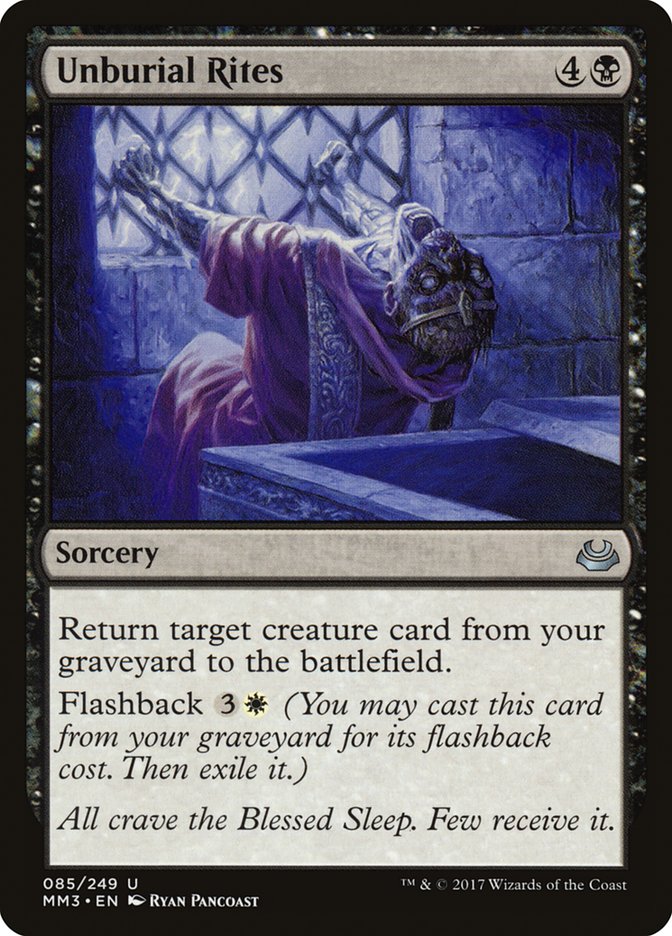Amonkhet is almost here, and with it come some exciting new abilities, returning favorites, and a slew of interesting synergies. We don’t have the whole picture just yet, but the image is becoming clearer each day with each new previewed card. Whether or not this set has a significant impact on Standard is up in the air, but I have a feeling that it’s going to shake things up a bit.
For me, some of the most interesting cards previewed thus far come in the form of answers. Izzet and other blue color pairs have needed some help fending off Mardu Vehicles and Four-Color Saheeli. Not only has the spot removal before Amonkhet been bad at solving the Scrapheap Scrounger problem, Fatal Push and Unlicensed Disintegration have singlehandedly invalidated some of the early threats that Izzet mages could play.
I mean, I don’t know about you, but I’m not planning on touching Thing in the Ice anytime soon. Fatal Push makes it too much of a liability.
But without Thing in the Ice, there aren’t a lot of cards that reward you for drawing a bunch of cards. Before Fatal Push, Thing in the Ice wasn’t fantastic, but it was still a good threat for control decks as a means of preventing early attacks while simultaneously building toward a big turn, and all for the low, low price of casting your spells.
Without Thing in the Ice being a reliable early drop for blue-based control decks, we have to rely on answering just about every threat thrown at us. For the current suite of removal and counterspells, that’s a tall order. With the threat diversity from Mardu Vehicles and Four-Color Saheeli, having the right answer at the right time is harder than ever.
For example, Negate is pretty good against Mardu Vehicles and Four-Color Saheeli, but both decks can present a reasonable number of early plays that aren’t affected by it. Subsequently, those early threats force you to tap out in some spots to deal with them, which can open up a later turn for your opponent to stick a planeswalker. While Negate is good at stopping their marquee cards like Gideon, Ally of Zendikar or Saheeli Rai, their value shrinks rapidly as they deploy more creatures. Toolcraft Exemplar can do a ton of damage in a short amount of time, all while that Negate rots in your hand.
On the other side of the spectrum, removal spells aren’t all that great against planeswalkers. Harnessed Lightning, Shock, Galvanic Bombardment, and even Incendiary Flow are fine cards for helping stem the bleeding in the early turns, but they shrink in value once an opponent sticks a planeswalker. That’s the hardest part to overcome as a control player. “There are no wrong threats, only wrong answers” rings true now more than ever.
I think all these “control” decks just need to change how they operate. The “draw-go” control decks I’ve seen over the last few months haven’t impressed me. The best control deck since Shota Yasooka’s Pro Tour-winning Grixis deck was the short-lived Jeskai Saheeli archetype. A control deck with a combo finish that punished people for tapping out is historically one of the best archetypes in Magic.
We haven’t had a lot of those running around Modern or Standard since Splinter Twin got banned, but the version that dominated the opening weeks of Aether Revolt Standard was definitely something I could get behind. While you can’t always have the right answers and the right time, you could certainly put more of your focus around a two-card combo that killed your opponent on the spot. You had a safety valve if something went wrong. Now? Now we just have Dynavolt Tower and a dream.
So what am I suggesting? For starters, I don’t think traditional control can actually exist in such a hostile environment. My suggestion is taking a different approach that can punish early stumbles, takes advantage of the removal at your disposal, and potentially puts your opponent in the ground before they know what hit them.
Creatures (14)
Lands (22)
Spells (24)
- 3 Shock
- 4 Fiery Temper
- 3 Lightning Axe
- 2 Magma Spray
- 2 Tormenting Voice
- 4 Take Inventory
- 2 Collective Defiance
- 4 Cathartic Reunion
Sideboard

First off, I have no idea if this deck is good. The idea came to me in a dream, and that dream was had while watching reruns of Community, so just take it with a grain of salt. Does it look like something I’d build for the opening week of a new Standard format? You bet your sweet bottom it does.
My gut tells me that one-drop creatures in this style of deck are significantly better than the two-mana creatures that could take their spot. Thermo-Alchemist, Thing in the Ice, and Stormchaser Mage all seem much weaker in comparison, simply due to the existence of Fatal Push. I do like that this style of deck has access to two different one-mana threats that could prove useful, and I’m definitely looking forward to seeing just how much damage they can do.
Obviously, neither Flameblade Adept nor Soul-Scar Mage is particularly awesome in the late-game, but they aren’t functional proxies of Raging Goblin like we’re used to seeing from one-drops. Instead, these two creatures are powered up by the entire theme of the rest of our deck. Synergy at its finest. The downside is that these creatures could be too weak to fight the late-game cards out of Mardu Vehicles and Four-Color Saheeli.
In a vacuum, decks like this rarely look good on paper. I mean, I don’t even know if Enigma Drake is actually playable. I just thought it looked cool and they might have a hard time killing it with Fatal Push. The removal spells could be off by a bit, depending on what types of creatures show up after the release of the new set.
I might want to just jam four copies of Magma Spray and call it a day. After all, Scrapheap Scrounger and Embalm could be problematic. My gut tells me that Shock is better because we have the potential to get aggressive and I want to be able to cast my spells at my leisure to trigger prowess or fuel Bedlam Reveler.
In a nutshell, this is the kind of deck that gives me goosebumps, and it could be the starting point of a future format staple. While U/R Goggles and U/R Dynavolt were a bit more reliant on an engine card to get the job done, this deck plays out much more like a traditional aggro-tempo deck with the tools to play a longer game thanks to cheap card advantage. Will this deck be the bee’s knees? I doubt it. But that doesn’t mean I can’t take it for a spin first.
The Problem with Brute Force
Speaking of Gideon, Ally of Zendikar and the like, brute-force power is a problem in Standard for a lot of reasons. Splashy effects like Emrakul, the Promised End are cool the first few times you see it happen, but the luster is lost over time. When Gideon, Ally of Zendikar was first released, it was a boon for white decks. Abzan Aggro used it at the top of the curve to punish control decks for tapping out, but at the time we had a lot of stronger options for fighting back.
The stronger you make control, the more powerful the threats need to be. That’s just science. And in a world where Dig Through Time is legal, you can bet your bottom dollar that Gideon, Ally of Zendikar is a more-than-fine threat to punish them with. But that’s in a world where the counterspells and removal line up well on the control player’s side. That’s balance.
And, let me tell you, the cards us control players have access to right now are nowhere near powerful enough to compete with such brute force.
Powerful synergy between cards is a fine way to counteract brute force, but only if you have the right tools. The U/R Spells deck from before might just have enough punch to get the job done, but all that relies on your cards coming together in such a way that you can get full value out of them. If you draw too many lands, or too much removal, or too few threats, the wheels can fall off. Meanwhile, your opponent can just bury you with a single card. Walking the line is tough, but it is a path I’d rather take.
But synergy doesn’t just mean casting a bunch of instants and sorceries with cards that benefit from it. You can promote synergy a number of ways. For example, this card looks like you could build an entire deck around it.
Not only do you have the reanimator element, but you get a tough-to-kill planeswalker that can constantly generate threats on an empty battlefield. Of all the Amonkhet cards revealed so far, this one has most of my attention. But honestly, this card is just another example of brute force. If left unchecked, it can singlehandedly win the game through removal. Alongside a dedicated graveyard shell, it can stall games by recurring Ishkanah, Grafwidow. And, if the you’re able to stall the battlefield, her minus ability is basically Plague Wind.
No decklist I build is going to do it justice, but my gut tells me that Liliana, Death’s Majesty is going to become a format staple and may singlehandedly revive the B/G Delirium archetype even in the absence of Emrakul, the Promised End.
Creatures (15)
- 2 Mindwrack Demon
- 3 Tireless Tracker
- 3 Ishkanah, Grafwidow
- 4 Grim Flayer
- 1 Gonti, Lord of Luxury
- 1 Noxious Gearhulk
- 1 Manglehorn
Planeswalkers (2)
Lands (24)
Spells (19)

Another rough draft, to be sure, but one that functions similarly to the B/G Delirium decks of old. Traverse the Ulvenwald is still a powerful tool at your disposal, while Ishkanah, Grafwidow and recursive elements keep the battlefield under control. You have enough removal to contain many of the early threats from both Four-Color Saheeli and Mardu Vehicles, yet also enough staying power to outlast virtually any control deck coming your way.
It can be difficult to balance a strategy between fighting Mardu Vehicles and Four-Color Saheeli, as they both present significantly different kinds of threats; the overwhelming sense of urgency created by the Felidar Guardian combo and an unchecked Gideon, Ally of Zendikar are very different problems to contend with. Like the U/R Spells deck from before, we look much more like a control deck than an aggro deck, but we have a powerful early threat to take advantage of our removal and other types of disruption.
While Grim Flayer lost a lot of value with the printing of Fatal Push (much like Thing in the Ice), it is still the best option available for a deck trying to get delirium. Plus, Fatal Push isn’t that great against the rest of our deck.
There are a lot of mediocre-looking cards in our deck, and it is possible we should build it with fewer bullets for Traverse the Ulvenwald. However, I like having access to a few key one-of creatures when we’re able to slow the game down significantly. And while Four-Color Saheeli and Mardu Vehicles are the two top decks in the current format, those might not be the two best decks in the format for long. Plus, in the opening weeks of the Standard format, it is better to have a more diverse range of options because people are more likely to branch out and explore alternatives to the two decks that have dominated Standard for so long.
If you asked me a few months ago if Vessel of Nascency was good enough for the current Standard format, I might have laughed. Honestly, when on the draw against Mardu Vehicles, it is still essentially a mulligan. But with both Fatal Push and Grasp of Darkness as cheap ways to interact with Mardu Vehicles, it is still a fine card to cast later in the game. Not only does it almost ensure delirium by itself, it can dig for any number of singletons in your deck. It fuels the graveyard for Liliana, Death’s Majesty and can just smooth out some of your clunkier draws. I’ve never loved the card, but I can recognize its purpose.
As for Liliana, Death’s Majesty herself, there are two ways you can take the card. Zombify, Unburial Rites, and other reanimation spells have been used in Standard for years to bring expensive, off-color bombs to life in black-based decks. You can do the same thing here if you so choose, but I don’t know if there are any big creatures worth the risk. I tried doing something similar with Refurbish when Kaladesh first came out, but it ended up being a little too gimmicky. My suggestion is to stick to the course of using all the abilities of Liliana, Death’s Majesty well. If you focus too much on one aspect of the new planeswalker, you’re sure to miss the big picture. Cards like this are built to fit into decks, not carry them. Liliana, Death’s Majesty will certainly be one of the best cards in this deck, but it doesn’t have to be the only reason to play this deck.
Now, if we had access to a creature like Griselbrand…
Again, this is another deck built around a deck that has existed before, but it could certainly fold in the face of the big two. I’m under the impression that B/G Delirium has the right tools to shut down both archetypes, but I keep getting proven wrong by the Big Two. Either one or the other seems to shut down all comers.
If neither of those decks gets a card banned from it, I just hope we’re able to collectively find the answer ourselves. And if at least one of those decks gets hit with the banhammer, well, I say good riddance. While I’ll miss dying on the fourth turn, either literally or figuratively, it will be a positive step in the direction of opening up the Standard format. There are a lot of potential decks being oppressed by one or both of the Big Two, just waiting to get their time in the sun. I’m confident that we’ll find a new deck or two with all of these sweet cards from Amonkhet, but I won’t shed a tear if I never have to play against Felidar Guardian or Gideon, Ally of Zendikar ever again.
And I don’t know anyone who would.



